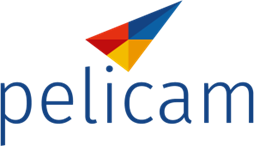
Published on July 31, 2020
If I walk into a Transformation Programme, particularly an IT led programme, and any individual, stream lead, PMO, Director or junior analyst, cannot tell me in five minutes, assisted only by a pen and white board, what the overall vision and strategy is, what the programme scope is and who the stakeholders are then I know there’s work to be done. That’s the Pen and Whiteboard Test.
The signs are many and include the business losing interest, scope and priorities keep changing, gaps and duplications in the solution, only technology being discussed, late identified manual workarounds or even key features enabling the benefit case slipping further and further into the future. The outcome will be a solution that partially meets the needs of those that shout loudest, misalignment between components, benefit cases that will never be realized and in some cases that I have seen programmes cancelled or paused having already spent millions of pounds.
To mitigate the risk of delivering the wrong solution, or no solution at all, here are the three areas I always look to:
Vision, Strategy and Context
There should be an image in everybody’s head. The image does not have to be exactly the same, but it must be of the same thing. This image must inspire and motivate. The image must be accompanied by an understanding of how the organization is going to get there and what needs to happen to enable it to do so. There are architecture models and templates; there are software suites to capture descriptions; it might only be written on a wall or a bit of paper. However it is recorded, without it different members of the business and programme will have different views of not only the destination, but also the priorities, scope and direction to achieve it. Different members of the team will work to different templates, and most people will be disappointed.
If you fail the pen and whiteboard test or if two leaders describe something differently to each other, you know you have a challenge.
Operating Model, Capabilities and Value Chains
The operating model demonstrates how the business will work, the capability map or matrix will describe all the things the business has to be able to do and the value chains demonstrate the multiple ways the capabilities need to be connected in order for the model to work. Without these it is difficult to be sure that all the capabilities, stakeholders and business rules have been included or where they must hand off to each other has been understood and included. With regard to process, business and data analysts, they can design the details of “How”, but only if they know the “What”. Failure to capture these assets leads to gaps and duplication and the follow-on manual or system work arounds that clutter, delay and often kill the programmes.
It makes no difference if the process is manual or delivered through technology, if new gaps are being identified and elements reworked as new requirements are being found along the way it is quite probable that the quality and attention to detail on the operating model, capabilities and value chains has not been good enough.
Scope and Stakeholders
One advantage of having a robust and agreed vision, strategy, operating model and list of capabilities is that they can be used to define scope. But you need to define scope before you can define these business architecture assets. Scope will change, but unless you have it documented and then control it, bits will get missed and bits will get added. In addition to including stakeholders in defining requirements and leading change readiness, by identifying stakeholders in parallel with defining the business architecture up front it will assist in tying down scope and accountability.
If there are ongoing discussions on what is in scope, or if new stakeholders keep appearing or adding late requirements, then something is not yet complete and requirements and designs will continue to be updated and change. Budgets get overspent due to scope increase and reworks, business cases get blown because of dropping parts out of scope.
So essentially it all comes back to the Pen and Whiteboard Test. Transformation programmes are threatened when clarity is lacking and priorities diverge. While that might sound a simple enough diagnosis, finding a cure can mean re-stating your business architecture, possibly saving your programme. With a sound understanding of your business architecture the more effectively your business can adapt, the more quickly transformations can be implemented and the sooner benefits can be realised.


